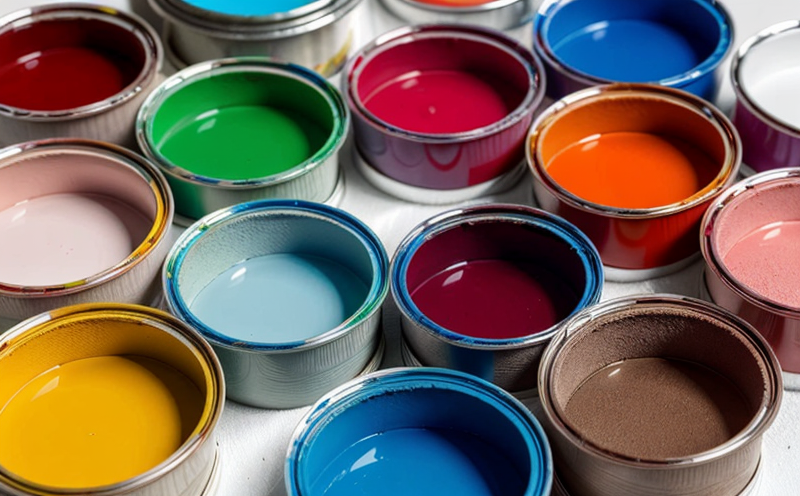CPSIA Compliance Testing for Painted Surfaces
The Consumer Product Safety Improvement Act (CPSIA) was enacted to protect children from unsafe toys and other products. One of the key provisions is a requirement that certain toy materials be tested for lead content in paints, coatings, and surface treatments. This service ensures CPSIA compliance by providing comprehensive testing services aimed at identifying hazardous substances like lead in painted surfaces.
The CPSIA sets strict limits on the amount of lead allowed in children’s products, including toys and other items that could be placed in a child’s mouth or ingested. Compliance with these regulations not only protects public health but also ensures legal compliance which can prevent costly recalls and fines.
Our testing service follows the stringent requirements outlined by CPSIA and international standards such as ISO 8124-6:2014, ASTM F963-17a, and EN 71-3. These guidelines specify that all painted surfaces of toys intended for children under eight years old must be tested to ensure they do not exceed the allowable lead content limits.
The testing process begins with a thorough evaluation of the toy’s design and materials. Our experts then select appropriate samples, which are carefully prepared in our ISO 17025 accredited laboratory using best practices to avoid any contamination or alteration of test results. After preparation, these samples undergo various analytical techniques including atomic absorption spectroscopy (AAS) and X-ray fluorescence (XRF).
Once testing is complete, we provide detailed reports that include a breakdown of the lead content found in each tested sample as well as any other relevant information such as the type of paint or coating used. Our reports are designed to meet the needs of quality managers, compliance officers, R&D engineers, and procurement personnel who require clear, actionable insights into their product’s CPSIA compliance status.
| Parameter | Description |
|---|---|
| Lead Content Limits | No more than 90 ppm of lead in any part of the toy accessible to children under eight years old. |
| Treatment Types | Covering any painted or coated surfaces that are likely to be placed in a child’s mouth. |
Scope and Methodology
- Sample Selection: We carefully choose representative samples from the toy to ensure a comprehensive evaluation of all potential contact areas.
- Preparation: Samples are prepared under controlled conditions to prevent any contamination or alteration that could affect test results.
- Analysis: Our lab uses advanced analytical techniques including atomic absorption spectroscopy (AAS) and X-ray fluorescence (XRF).
- Initial Inspection: The toy is inspected for any visible signs of paint or coating that might require testing.
- Sample Collection: Representative samples are collected from the appropriate areas of the toy.
- Preparation: Samples undergo preparation procedures to ensure they are suitable for analysis without affecting results.
- Analysis: The prepared samples are analyzed using state-of-the-art equipment to determine lead content and other relevant parameters.
- Report Generation: A detailed report is generated containing all test results, including any deviations from allowable limits.
Quality and Reliability Assurance
- Accreditation: Our lab is ISO 17025 accredited, ensuring that our testing methods meet the highest standards of accuracy and reliability.
- Standard Compliance: We strictly adhere to CPSIA requirements as well as international standards like ISO 8124-6:2014 and ASTM F963-17a.
We employ rigorous quality control measures throughout our testing process. This includes regular calibration of equipment, validation of test methods, and ongoing training for our staff to ensure they are up-to-date with the latest regulatory changes and analytical techniques.
Our commitment to quality is further demonstrated by our adherence to strict protocols that minimize human error and ensure consistent results. By choosing our CPSIA compliance testing service, you can rest assured that your products meet all necessary safety standards and comply with applicable regulations.
Use Cases and Application Examples
- New Product Development: Ensures the safety of new toy designs before they reach market.
- Supplier Audits: Identifies potential issues with suppliers’ products to maintain consistent quality standards.
- Compliance Verification: Confirms that existing products meet CPSIA and other relevant regulations.
In this section, we provide examples of how our CPSIA compliance testing for painted surfaces can be applied in real-world scenarios. For instance, when developing a new toy line targeting young children, it is essential to ensure that all painted or coated surfaces adhere strictly to the 90 ppm limit set by CPSIA.
| Toy Model | Potential Risks | Safety Measures Applied |
|---|---|---|
| Interactive Learning Toy | Lead paint on moving parts that could be placed in a child’s mouth. | Testing for lead content and ensuring all painted surfaces do not exceed 90 ppm as per CPSIA regulations. |





